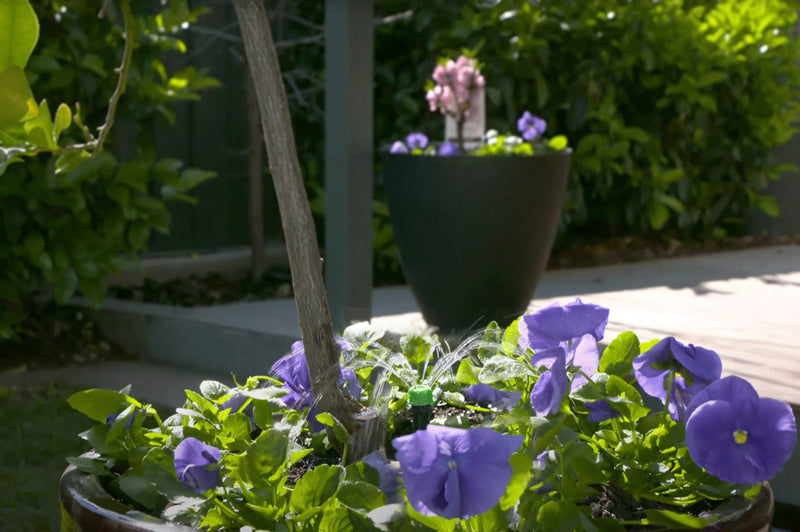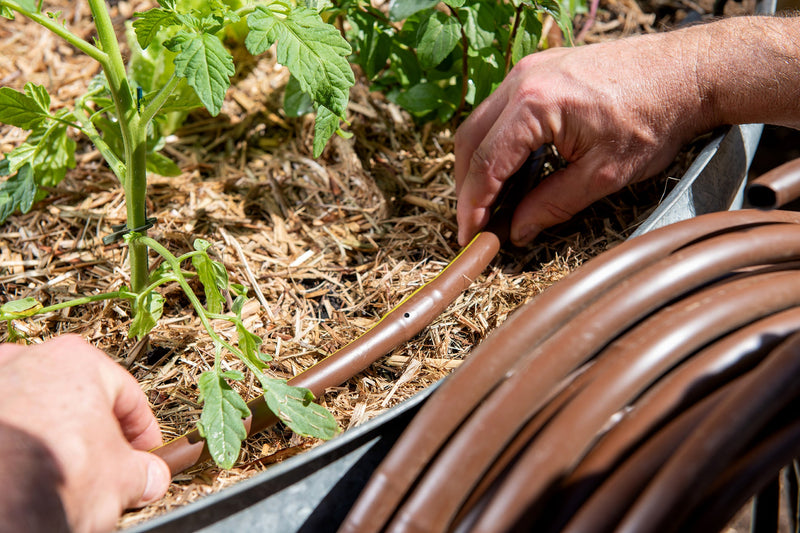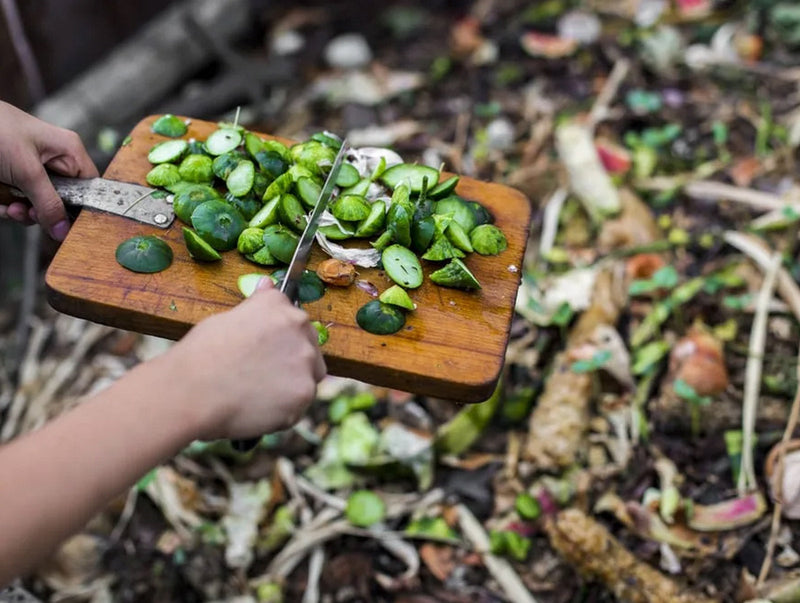

Everything you need to know about drip irrigation systems
Watering your garden can take a lot of time and energy, especially if it's a sizeable one. While smaller backyards can be watered with just a hose or sprinkler system, some need more maintenance on a regular basis than others. We're often strapped for time, and if you don't have the right system in place for your garden, all your hard work to make it beautiful will be wasted.
What is drip irrigation?
This is where having an irrigation system comes in handy, saving you money in the long run and giving your garden the opportunity to flourish. If you're not familiar with drip irrigation it's a system that slowly releases water directly to the roots of your plants. There are two main types, Online emitters and Inline emitters.
Online emitter systems are when the drippers or sprays sit outside of the poly tube. They can either be punched into the 13mm black poly tubing, or run away from the poly tube using smaller 4mm tube to get direct to the root bowl.
Inline emitter systems are what is typically known as Drip Eze. The idea with this system is to create a grid of tubing over the area to be watered. The emitters are spaced inside the brown tube with the aim to wet the whole area evenly. This promotes root growth and leads to strong healthy plants while reducing run off and water wastage.
Drip systems are best suited for garden beds, veggie patches, under hedges or anywhere where plants will grow. They are not typically used under lawn or grass areas as this can lead to clogged emitters as the roots try to find their way inside the tubing. Drip systems do exist for under lawn watering, but often require chemical injection to keep the roots out.
Where can I use my drip irrigation system?
Online emitter systems are best used where plants are spaced further apart. These allow you to run water to only the root bowls of the plants you want to water. You can easily add more drippers to your drip system, especially when the root zone widens and your plants become more mature.
Inline systems or Drip Eze is perfect for high density planting areas, intricately shaped landscape beds and median strip garden beds where overspray cannot be tolerated. Both options are easy to install and can be covered in mulch to be protected from the sun.
Benefits of drip line irrigation
Drip lines are a great resource as there is almost no water wastage as they sit nicely on the ground, while sprinklers may be less efficient due to wind-drift. It also works well for high maintenance plants that need more water than others by easily adding more drippers or in-line drop pipe to those thirsty plants.
With the same amount of water coming from each dripper it can get twice as much water as other low maintenance plants, allowing you to design your drip system to suit your garden's needs. You can also run poly pipe and drippers around the perimeter of the root zone if you have fruit trees, allowing even watering for fruits to grow.
When growing vegetables, an inline dripper system can be a great option as you can plant seedlings near the drip emitter, giving the seedling a better chance to stay hydrated and develop. The pipe is easy to maneuver if the bed needs to be dug out or vacant.
Installing inline and online irrigation systems
Feel like your garden needs a bit of both to get the ultimate results? You can install inline and online tubing systems on the same line! If you're using an inline dripper tubing you can add a dripper every so often with 4mm thin tubes to get to a plant that's out of reach from the main tube. Be sure you aren't overloading the drip tube by having too many drippers on the same line or going long distances, as it can create inconsistent watering.
Make sure you research and ask for advice from your local supplier on how to measure and estimate the pressure and length of your lines, as well as experimenting with duration of watering for the best results for your garden. Check your flow rate by doing the bucket test to determine how many drippers, tricklers or maximum run length of Drip Eze you can run on your system.
Pope's DIY Tip: No matter what type of irrigation system installed, your watering schedule should reflect the plants' needs. Check for moisture in the soil and try to 'toughen' your plants, especially if you know rain is due soon (also so you don't over water them). Your garden is going to have the best results if you think about the long game, rather than instant gratification; be patient and nurture your garden, and it will work be lush for a long time.
